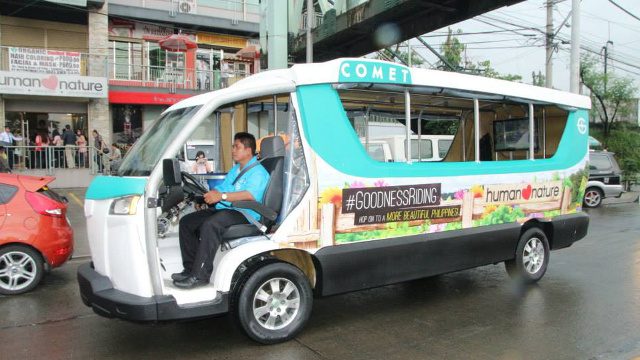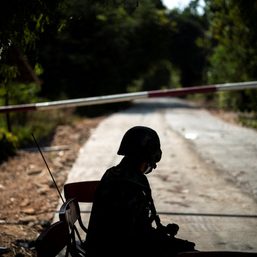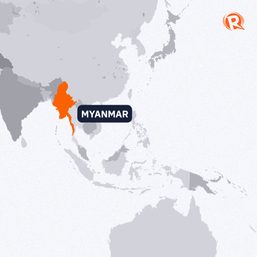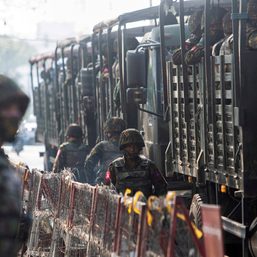SUMMARY
This is AI generated summarization, which may have errors. For context, always refer to the full article.


MANILA, Philippines – Pay for the same minimum fare as jeepneys in Metro Manila, but minus the noise and pollution.
Operators of e-jeepney fleet City Optimized Managed Electric Transport (COMET) told reporters on Wednesday, January 7, that the COMET will charge a minimum fare of P7.50 once the Land Transportation Franchising and Regulatory Board (LTFRB) approves its petition for the issuance of franchise.
The application was filed on Tuesday, January 6.
“It was submitted and evaluated yesterday. The petition was filed with our National Capital Region (NCR) office. The NCR regional director will first decide the motion for issuance of provisional authority,” LTFRB chairman Winston Ginez said on Wednesday, January 7.
COMET will charge passengers a base fare of P7.50 ($0.17*), the same minimum amount charged by diesel-powered public utility jeeps.
“Fare rates are based on jeepney rates because we are competing for the market of PUJs,” Global Electric Transportation Ltd (GET) president Sigfrido Tinga told reporters on Wednesday.
GET is a joint venture of local investors and US-based Pangea Motors LLC, which operates a 60,000 square feet manufacturing facility in Cavite.
It is behind COMET, a fleet of some 30 lithium battery-powered vehicles that ply on two 14-stop routes between SM North EDSA and LRT2 Katipunan.
(READ: Quezon City e-jeepneys get first route)
Seeking to compete with the traditional PUJs, COMET aims to attract passengers with its value added services which include Wi-Fi connectivity and surveillance camera.
The fleet of hybrid jeepneys was launched in September last year, when GET introduced its cashless payment system through a reloadable card.
Going green
The transportation system in the Philippines continues to be highly reliant on fossil fuel, but things are starting to change.
In March 2014, the government shelled out P505.6 million ($11,225.50) to put 100,00 electric tricycles (e-trikes) on roads.
The e-trike project was financed through a joint initiative of the government and the Asian Development Bank (ADB).
An ADB study in February 2014 showed that an e-trike driver could bring down fuel costs to P50 ($1.11) from P250 ($5.55) a day.
Unlike previous projects, GET’s transportation system had no support from government or financial institutions, said Transportation Secretary Joseph Emilio Abaya.
“We hope this is the start of replacing smoke-belching and poorly-maintained jeeps with high-tech, efficient, and environmentally-friendly e-jeepneys,” Abaya said.
GET aims to sustain its business by collecting revenues from advertising on top of the amount it would earn from fares. The vehicles’ mounted TV screens and side trunk are available for advertising lease.
Each vehicle costs over P1 million and could be acquired through financing programs. An initial P50,000 ($1,110.60) cashout by the jeepney owner is required, and who will be matched with a funding partner, said Tinga.
The vehicles, with a capacity of 20 passengers, could run 70 kilometers per charge that lasts 4.5 hours using a regular outlet or 1.76 hours using a fast charger. – Rappler.com
*$1 = P45.02
Add a comment
How does this make you feel?





There are no comments yet. Add your comment to start the conversation.